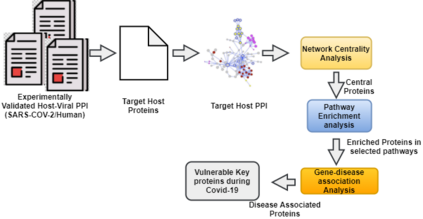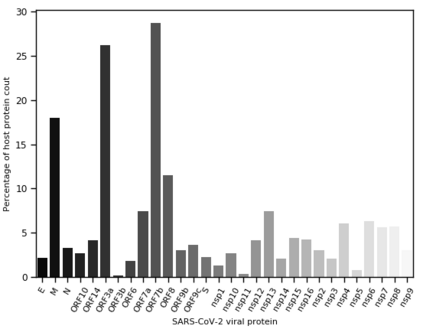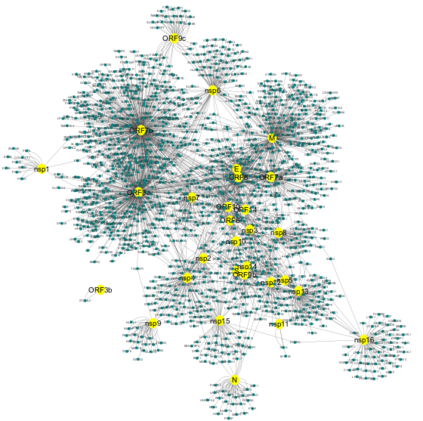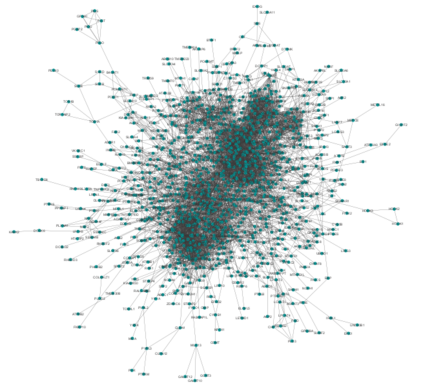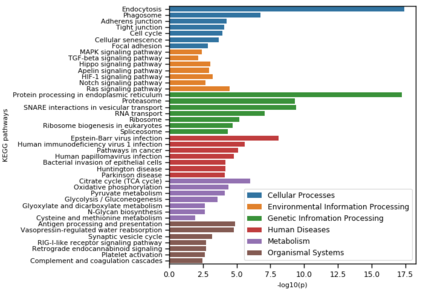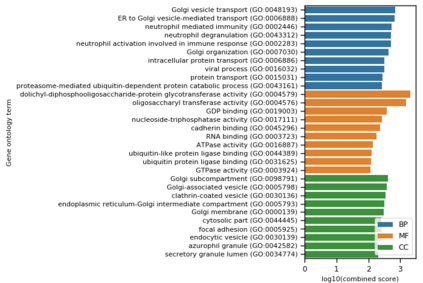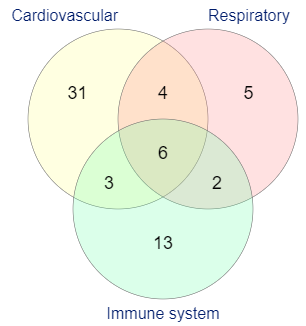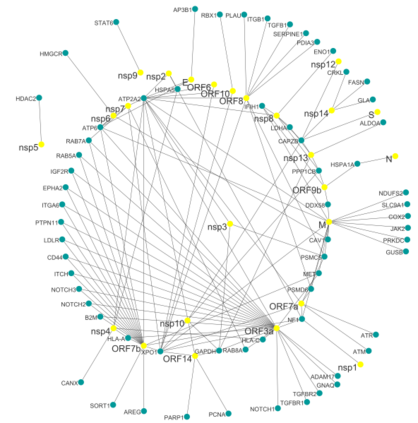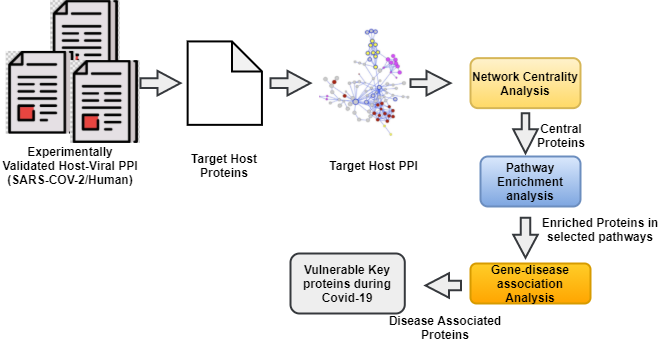The development of therapeutic targets for COVID-19 treatment is based on the understanding of the molecular mechanism of pathogenesis. The identification of genes and proteins involved in the infection mechanism is the key to shed out light into the complex molecular mechanisms. The combined effort of many laboratories distributed throughout the world has produced the accumulation of both protein and genetic interactions. In this work we integrate these available results and we obtain an host protein-protein interaction network composed by 1432 human proteins. We calculate network centrality measures to identify key proteins. Then we perform functional enrichment of central proteins. We observed that the identified proteins are mostly associated with several crucial pathways, including cellular process, signalling transduction, neurodegenerative disease. Finally, we focused on proteins involved in causing disease in the human respiratory tract. We conclude that COVID19 is a complex disease, and we highlighted many potential therapeutic targets including RBX1, HSPA5, ITCH, RAB7A, RAB5A, RAB8A, PSMC5, CAPZB, CANX, IGF2R, HSPA1A, which are central and also associated with multiple diseases
翻译:确定感染机制所涉及的基因和蛋白质是揭示复杂的分子机制的关键。全世界分布的许多实验室共同努力,积累了蛋白质和基因相互作用。在这项工作中,我们综合了这些现有结果,并获得一个由1432个人类蛋白组成的宿主蛋白-蛋白互动网络。我们计算了确定关键蛋白的网络中心点措施。然后,我们进行了中央蛋白质的功能浓缩。我们发现,所查明的蛋白质大多与几个关键途径有关,包括细胞过程、信号传输、神经降解性疾病。最后,我们把重点放在引起人类呼吸道疾病的蛋白质上。我们的结论是,COVID19是一种复杂的疾病,我们强调了许多潜在的治疗目标,包括RBX1、HSPA5、ITCH、RAB7A、RAB5A、RAB5A、RAB8A、PSMC5、CAPZB、CANX、IGF2R、H1A,HA,HAA,这些是核心的,也与多种疾病有关。

